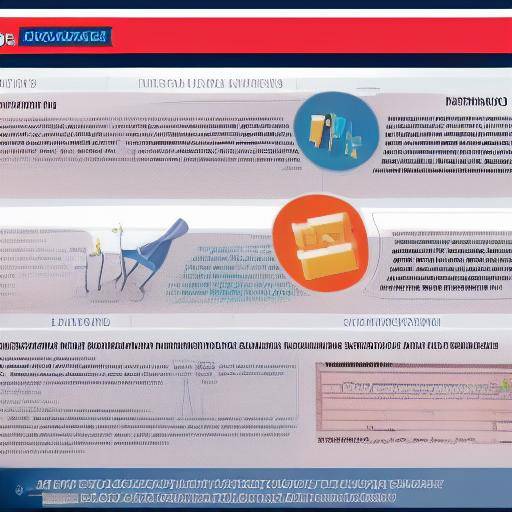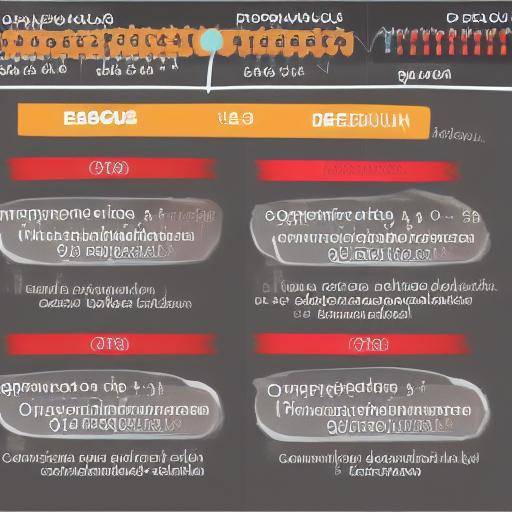
In life, it is essential to make decisions that guarantee the safety and protection of our loved ones. One of these decisions is the choice of an adequate life insurance. Assessing life insurance coverage needs is crucial to ensuring that our loved ones are financially protected in the event of an unexpected event. In this article, we will explore in detail how to carry out this analysis, the importance of planning in this process and how to ensure the desired security for our loved ones.
Introduction
Assessing life insurance coverage needs is essential to ensuring the financial stability of the family in the event of the death of the main provider. A careful approach and sound analysis are critical to determining the amount of coverage required. In addition, planning is crucial to ensuring that the contracted life insurance meets the present and future needs of the family. The financial security that offers well-evaluated and planned life insurance provides peace and stability to loved ones in difficult times.
Analysis of life insurance coverage needs
Analysis of life insurance coverage needs involves assessing several factors to determine the amount of financial protection required. Some of these factors include:
1. Financial Obligations Assessment
It is crucial to consider outstanding debts, such as mortgage loans, student loans, credit cards, and any other significant debt. These financial obligations must be covered by life insurance to avoid an additional financial burden on the family in the event of death.
2. Income and Family Expenses
It is important to assess current family income and expenditure to determine how much it would be necessary to replace the income the main provider provides to the home. In addition, it is essential to consider future expenses, such as children ' s education, long-term care for dependent family members, and other projected family costs.
3. Targets to Long term
Assessing the long-term financial goals of the family is crucial. This may include retirement planning, medical emergency funds, and any other financial objective that the family wishes to achieve even in the absence of the primary provider.
Planning as a fundamental pillar
Once the analysis of coverage needs has been carried out, the next crucial stage is planning. Life insurance planning involves selecting the right type of insurance that is aligned with the family's financial needs and objectives. Some important aspects of life insurance planning include:
1. Type of Insurance
Selecting the appropriate type of life insurance is essential. Common options include term insurance, full insurance and universal insurance. Each type of insurance has its own characteristics and benefits, so it is important to consider which is better aligned with the family's financial needs and objectives.
2. Quantity of Coverage
Based on the analysis performed, the precise amount of coverage is essential. This amount should be sufficient to cover all financial obligations, family expenses and long-term objectives identified during the analysis.
3. Beneficiaries and Designations
The choice of beneficiaries and designations should be carefully considered. This may include the designation of a primary and secondary beneficiary, as well as consideration of the creation of trusts or other structures to administer funds if the beneficiary is underage.
Guaranteeing security and tranquility
Once the analysis and planning are done, it is crucial to ensure that the selected life insurance provides the desired safety and tranquility for the family. Some additional considerations include:
1. Periodic Review
It is essential to periodically review coverage needs and adjust life insurance according to the changing circumstances of the family. Events such as the birth of a child, change of employment, or acquisition of new debts may require an update of life insurance coverage.
2. Professional advice
Finding professional advice from an insurance agent or financial planner can provide an expert perspective and ensure that informed decisions are made.
3. Financial education
Investing in family financial education is essential. This includes understanding the basic aspects of life insurance, the benefits and implications of the different options available.
Conclusion
Assessing life insurance coverage needs, carefully planning and ensuring family financial security are key steps to provide stability in difficult times. In conducting a thorough analysis of financial needs, planning with a vision to the future and ensuring continuous security through periodic reviews, families can make informed decisions that provide peace of mind and financial security to their loved ones.
FAQs
1. What is the importance of evaluating life insurance coverage needs?
Assessing life insurance coverage needs is crucial to ensuring that the family is financially protected in the event of the death of the primary provider. This helps to cover financial obligations, family expenses and long-term goals, providing financial stability to loved ones.
2. Why is planning important in the process of selecting a life insurance?
Planning provides a clear road map to select the appropriate type of insurance, determine the amount of coverage required and establish appropriate beneficiaries and designations. This ensures that life insurance is aligned with the family's financial needs and objectives.
3. How to ensure financial security through life insurance?
Financial security is ensured through careful evaluation and regular updating of life insurance coverage. Finding professional advice and educating the family on financial matters also contributes to ensuring long-term security and tranquillity.
4. When is the right time to review the life insurance coverage needs?
Life insurance coverage needs should be reviewed at key moments of life, such as changes in the financial, family or labour situation. In addition, it is recommended to review life insurance coverage at least once a year to ensure that it remains adequate.
5. What role does a financial planner play in assessing life insurance coverage needs?
A financial planner can provide expert advice and guide families in the process of assessing the life insurance coverage needs. Your experience can help make informed decisions that provide maximum financial protection.
6. What is the difference between end-to-end life insurance, entire life insurance and universal life insurance?
End-of-life insurance provides coverage for a specific period, while full- and universal life insurance provides life-long coverage along with additional investment options. Each type of insurance has its own characteristics, benefits and considerations that must be assessed on the basis of individual financial needs.
In short, assessing life insurance coverage needs, sound planning and ensuring financial security are key pillars for protecting the family at critical times. By following these steps and seeking professional advice, families can make informed decisions that provide long-term financial stability.






















































